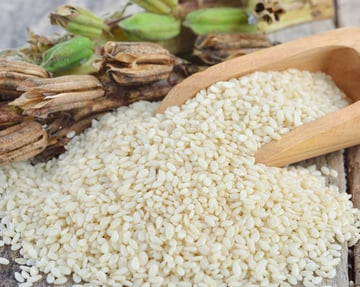When labeling spices and spice blends, it’s important to consider a variety of factors, including what is considered a spice, and how to treat spices in a recipe vs. as a standalone product. This blog will cover:
The FDA defines the term “spice” as:
… any aromatic vegetable substance in the whole, broken, or ground form, except for those substances which have been traditionally regarded as foods, such as onions, garlic and celery; whose significant function in food is seasoning rather than nutritional; that is true to name; and from which no portion of any volatile oil or other flavoring principle has been removed.
Below is a list of some spices that can fall under the “spice” term.
- Allspice
- Anise
- Basil
- Bay leaves
- Caraway seed
- Cardamon
- Celery seed
- Chervil
- Cinnamon
- Cloves
- Coriander
- Cumin seed
- Dill seed
- Fennel seed
- Fenugreek
- Ginger
- Horseradish
- Mace
- Marjoram
- Mustard flour
- Nutmeg
- Oregano
- Paprika
- Parsley
- Pepper, black
- Pepper, white
- Pepper, red
- Rosemary
- Saffron
- Sage
- Savory
- Sesame*
- Star aniseed
- Tarragon
- Thyme
- Turmeric
You can view a full list of spices on the Federal Register. (Ingredients not found on this list must be called by their common name.)
While Sesame still appears on the list of Spices, recent regulations will affect how Sesame must be declared moving forward.
The Food Allergy Safety, Treatment, Education & Research (FASTER) Act, signed into law in April 2021, establishes sesame as the ninth major U.S. food allergen and mandates that all foods entering interstate commerce on or after January 1, 2023, that contain sesame must bear a sesame allergen declaration, even when used as a spice, and allowed under the term “spice.”
Read our sesame labeling blog to learn how Genesis Foods simplifies this process.
If your product contains salt, you must declare “salt” in your list of ingredients. Salt does not fall under the “spice” blanket term.
If you use one or more spices in the recipe, you can list the ingredient(s) by using either specific common or usual names, or by using the declaration “spice(s),” “flavor,” “natural flavor,” or “artificial flavor.”
However, if you use certain spices that can also be used as color (such as paprika, turmeric, and saffron), you should say “spice and coloring.”
INGREDIENTS: Apple Slices, Water, Cane Syrup, Corn Syrup, Modified Corn Starch, Spices, Salt, Natural Flavor, and Artificial Flavor
Ingredient lists for single ingredient spices or spice blends
If your product is a standalone jar of spice, the package must declare the name of the spice (e.g., Ground Nutmeg). Most of the time, the name of the spice on the front of the container will suffice.
If it is a blend of spices, most ingredients must be listed by name. However, blended spices that contain both “spice” and “non-spice” components can list the spice portion of the blend as “spice,” but the “non-spice” components (e.g., salt, garlic powder, etc.) must be identified by name.
INGREDIENTS: Chili Pepper, Salt, Spices, and Garlic.
A Nutrition Facts label is required on a single spice ingredient product if:
- the amount of sodium per serving is 5mg or more
- the spice contains 5 Calories or more per serving
You do not have to have a Nutrition Facts label on spice products that contain less than 5 calories per serving, and all other nutrients can be rounded down to 0.
You can use Genesis R&D to verify whether your product requires a Nutrition Facts Label. To do so, create a one-serving recipe in Genesis R&D and bring in ¼ tsp of your spice (The RACC for one serving of spice is ¼ tsp, or 0.5 g if not measurable by a teaspoon.) Then view the Nutrition Facts Label or the Spreadsheet report to check the nutrient values for your spice Recipe.
Other posts you might be interested in
View All Posts
Food Safety
8 min read
| March 2, 2016
Spice Safety: FDA Finds Widespread Salmonella Problem
Read More
Product Formulation
4 min read
| February 2, 2021
How to Create a Health Canada Compliant Label
Read More
Food Labeling
18 min read
| October 8, 2021



